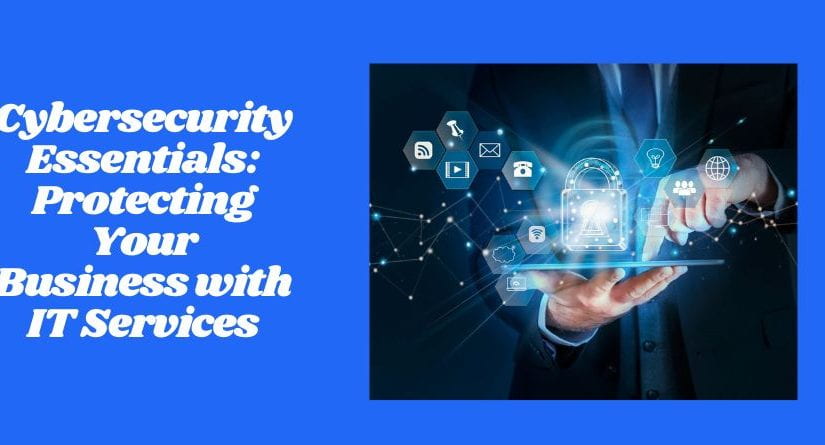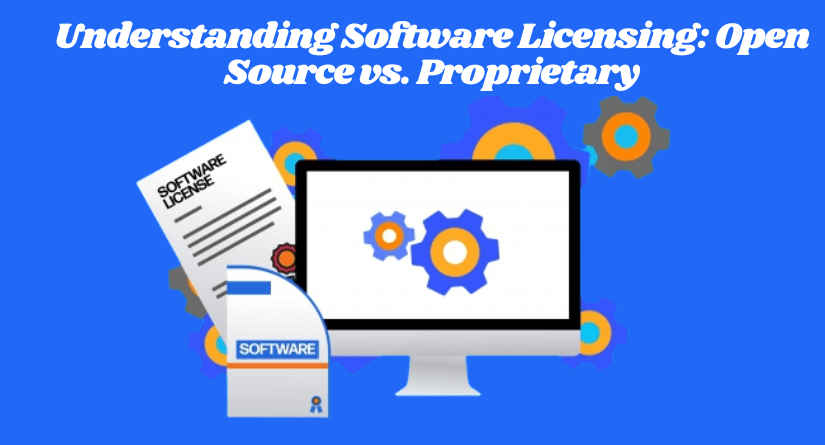Introduction to Cybersecurity:
In today’s digitally connected world, where businesses rely heavily on technology, the threat landscape has expanded exponentially. Cybersecurity has become a paramount concern for organizations of all sizes, as malicious actors constantly seek to exploit vulnerabilities and gain unauthorized access to sensitive data and resources. The consequences of cyberattacks can be severe, ranging from financial losses and reputational damage to legal liabilities. Cybersecurity is the practice of safeguarding digital systems, networks, and data from cyber threats, including hackers, malware, ransomware, and other malicious activities. It encompasses a wide range of strategies, technologies, and best practices designed to protect the confidentiality, integrity, and availability of critical information. This introductory chapter aims to provide a foundational understanding of cybersecurity and its significance in protecting businesses from potential cyber threats.
Understanding Cyber Threats:
In the interconnected digital landscape, businesses and individuals face an ever-evolving array of cyber threats that can disrupt operations, compromise sensitive data, and undermine trust in technology. Understanding these cyber threats is crucial for implementing effective cybersecurity measures and safeguarding against potential risks.
1. Malware: Malicious software, such as viruses, worms, Trojans, and ransomware, can infiltrate systems, corrupt data, and extort victims for financial gain.
2. Phishing: Cybercriminals use deceptive emails, messages, or websites to trick users into divulging sensitive information, such as login credentials or financial details.
3. Insider Threats: Disgruntled employees or contractors with access to critical data may intentionally or unintentionally cause harm to the organization’s cybersecurity.
4. Denial of Service (DoS) and Distributed Denial of Service (DDoS) attacks: These attacks overwhelm servers or networks, causing disruptions and denying access to legitimate users.
5. Advanced Persistent Threats (APTs): Sophisticated, long-term attacks aimed at stealing sensitive information or perpetrating espionage without being detected.
6. Zero-day Exploits: Attackers target undisclosed vulnerabilities in software developers can release patches, giving them an advantage over security measures.
7. Internet of Things (IoT) Vulnerabilities: With the proliferation of connected devices, insecure IoT devices can be exploited to gain unauthorized access.
8. Social Engineering: Cybercriminals manipulate individuals into revealing sensitive information or granting access to secure systems.
9. Supply Chain Attacks: Malicious actors compromise third-party vendors to gain access to their customers’ systems.
10. Data Breaches: Unauthorized access to and exfiltration of sensitive data, leading to potential identity theft or financial fraud.
The Importance of Cybersecurity for Businesses: In today’s digital age, the importance of cybersecurity for businesses cannot be overstated. With increasing reliance on technology, the proliferation of online transactions, and the storage of valuable data in digital formats, organizations are faced with a myriad of cyber threats that can have severe consequences if not adequately addressed. Here are some key reasons why cybersecurity is crucial for businesses:
1. Protection of Sensitive Data: Businesses handle vast amounts of sensitive information, including customer data, financial records, intellectual property, and trade secrets. Cybersecurity ensures the confidentiality, integrity, and availability of this data, guarding it against unauthorized access, theft, or misuse.
2. Safeguarding Reputations: A data breach or cyberattack can severely damage a company’s reputation and erode customer trust. Maintaining robust cybersecurity measures helps businesses preserve their brand image and credibility in the market.
3. Financial Security: Cyber incidents can lead to significant financial losses, including direct costs associated with incident response, legal liabilities, and regulatory fines. Cybersecurity investments are a proactive approach to mitigating potential financial damages.
4. Compliance and Legal Obligations: Many industries have strict data protection regulations and compliance requirements. Adhering to these regulations is not only a legal obligation but also an essential aspect of maintaining public trust.
5. Business Continuity: Cyberattacks and data breaches can disrupt business operations, leading to downtime, loss of productivity, and revenue loss. Implementing cybersecurity measures ensures continuity in the face of potential threats.
6. Protection Against Intellectual Property Theft: Intellectual property, such as patents, designs, and trade secrets, is vital for maintaining a competitive edge. Cybersecurity prevents theft and unauthorized access to these valuable assets.
7. Defending Against Disruption: Cyber threats, such as ransomware and denial-of-service attacks, can paralyze business operations. Cybersecurity measures help businesses proactively defend against such disruptions.
8. Securing Supply Chain: Businesses often rely on third-party vendors and partners. A strong cybersecurity posture ensures that the entire supply chain remains secure and reduces the risk of cyber incidents through interconnected networks.
Implementing Security Measures: In the dynamic world of cybersecurity, it is essential for businesses to implement comprehensive security measures to safeguard their digital assets and sensitive information. A strong security posture involves a combination of proactive planning, advanced technologies, and best practices. Here are key components of implementing security measures:
1. Building a Robust Security Strategy:
Developing a robust security strategy is the foundation of effective cybersecurity. This involves conducting a thorough risk assessment to identify potential vulnerabilities and threats specific to the business. A well-defined security strategy aligns with the organization’s goals and risk tolerance, outlining the necessary steps to protect assets, prevent breaches, and respond to incidents effectively.
2. Firewall and Network Security:
Firewalls act as the first line of defense against unauthorized access and external threats. They monitor and control incoming and outgoing network traffic based on predefined security rules. Implementing firewalls and other network security solutions helps create a secure perimeter, protecting the organization’s internal network from external cyber threats.
3. Secure Access Controls
Proper access controls ensure that only authorized individuals have the appropriate level of access to critical systems, data, and resources. This involves implementing strong authentication methods such as multi-factor authentication (MFA) and role-based access control (RBAC). Additionally, regular access reviews and revoking access for former employees are essential practices in maintaining a secure environment.
4. Encryption and Data Protection:
Encryption plays a vital role in protecting sensitive data, both in transit and at rest. Encrypting data ensures that even if it is intercepted or accessed by unauthorized individuals, it remains unreadable and unusable. Businesses should also implement data loss prevention (DLP) solutions to monitor and prevent unauthorized data exfiltration. In addition to these key measures, organizations should consider implementing intrusion detection and prevention systems (IDS/IPS), conducting regular security awareness training for employees, and staying up-to-date with security patches and updates for all software and systems.
Managed IT Services for Cybersecurity: In the realm of cybersecurity, businesses are increasingly turning to managed IT services to strengthen their defense against ever-evolving cyber threats. Managed IT services offer specialized expertise, proactive monitoring, and continuous support to ensure a comprehensive and effective cybersecurity approach. If you want to build fashion mobile apps then you can contact highly reputed mobile app development companies. Here are key aspects of leveraging managed IT services for cybersecurity:
1. Understanding Managed IT Services:
Managed IT services involve outsourcing specific IT functions, such as cybersecurity, to third-party providers. These providers, known as managed service providers (MSPs), deliver a range of services tailored to meet the unique security needs of businesses. Managed IT services for cybersecurity encompass round-the-clock monitoring, threat detection and response, vulnerability management, incident handling, and security consulting.
2. Benefits of Outsourcing Cybersecurity: Outsourcing cybersecurity through managed IT services offers several advantages for businesses:
a. Expertise and Specialization: Managed IT service providers are equipped with cybersecurity experts who possess specialized skills and knowledge. They stay up-to-date with the latest threats, trends, and best practices, providing businesses with access to cutting-edge security solutions.
b. Proactive Defense: Managed IT services take a proactive approach to cybersecurity, continuously monitoring networks and systems for potential threats. This proactive stance helps detect and mitigate threats before they cause significant damage.
c. Cost-Effectiveness: Building an in-house cybersecurity team can be costly and challenging, especially for small and medium-sized businesses. Managed IT services offer a cost-effective alternative, allowing businesses to access top-notch security capabilities without the need for large upfront investments.
d. 24/7 Monitoring and Support: Cyber threats can strike at any time, making continuous monitoring essential. Managed IT services ensure round-the-clock surveillance and immediate response to security incidents, enhancing overall cyber resilience.
e. Scalability: Managed IT services can adapt to the changing needs of businesses. Whether it’s scaling up during busy periods or scaling down during lean times, managed services offer flexibility and agility.
Selecting the Right IT Service Provider:
Choosing the right managed IT service provider is crucial for a successful partnership. Consider the following factors when selecting an IT service provider for cybersecurity:
a. Experience and Track Record: Look for providers with a proven track record in delivering cybersecurity services. Evaluate their experience and client testimonials to gauge their effectiveness.
b. Range of Services: Ensure the provider offers a comprehensive suite of cybersecurity services that align with your business’s specific needs.
c. Security Standards and Certifications: Check if the provider adheres to industry standards and possesses relevant certifications, such as ISO 27001 or SOC 2.
d. Communication and Support: Evaluate the provider’s communication channels and responsiveness to ensure effective collaboration during incidents.
e. Customization and Flexibility: Look for a provider willing to tailor their services to your organization’s unique requirements. By carefully considering these factors, businesses can find the right managed IT service provider that complements their internal security efforts and helps reinforce their cybersecurity defenses in an increasingly digital and interconnected world.
Employee Awareness and Training:
Employees are both a critical line of defense and a potential vulnerability in the realm of cybersecurity. Establishing a culture of cyber awareness and providing comprehensive training are essential to empower your workforce with the knowledge and skills needed to safeguard against cyber threats. Here’s a breakdown of the key elements of employee awareness and training:
1. Importance of Employee Cybersecurity Training: The human factor is often a weak link in cybersecurity, with social engineering attacks targeting employees’ vulnerabilities. Comprehensive cybersecurity training is vital for several reasons:
a. Risk Mitigation: Educated employees are better equipped to identify and respond to potential threats, reducing the likelihood of successful attacks.
b. Data Protection: Employees who understand data handling protocols help safeguard sensitive information, mitigating the risk of data breaches.
c. Adherence to Policies: Training ensures that employees are aware of and adhere to cybersecurity policies and best practices.
2. Creating a Cyber-Aware Culture:
Establishing a cyber-aware culture is instrumental in fostering a security-conscious environment throughout the organization. Key steps include:
a. Leadership Support: Senior management’s commitment to cybersecurity sets the tone for the entire organization.
b. Regular Communication: Consistently communicate the importance of cybersecurity through various channels.
c. Incentives and Recognition: Reward and recognize employees who contribute to maintaining a secure app environment.
d. Interactive Workshops and Seminars: Conduct engaging sessions to promote discussions and increase awareness.
3. Educating Employees on Best Practices: Comprehensive training should cover a range of cybersecurity best practices, including:
a. Password Hygiene: Instruct employees on creating strong, unique passwords and using multi-factor authentication.
b. Phishing Awareness: Train employees to recognize phishing attempts and avoid clicking on suspicious links or sharing sensitive information.
c. Device Security: Educate on securing personal and work devices, including updates, antivirus software, and encryption.
d. Data Handling: Provide guidelines for secure data storage, sharing, and disposal.
e. Social Media and Public Information: Teach employees to be cautious about sharing personal and company information online.
Emerging Trends in Cybersecurity:
As technology advances at a rapid pace, the cyber threat landscape continues to evolve, giving rise to new challenges and innovative solutions. Staying informed about emerging trends is crucial for businesses to adapt and strengthen their cybersecurity strategies. Here are some key trends shaping the future of cybersecurity:
1. Artificial Intelligence and Machine Learning in Cybersecurity:
Artificial Intelligence (AI) and Machine Learning (ML) are revolutionizing cybersecurity by enhancing threat detection, analysis, and response. AI-powered tools can rapidly process vast amounts of data to identify patterns and anomalies, helping to detect previously unknown threats. ML algorithms can adapt and improve over time, making them effective in identifying and mitigating zero-day exploits and other advanced threats.
2. IoT Security Challenges and Solutions:
The proliferation of Internet of Things (IoT) devices presents unique security challenges. These devices, often interconnected and collecting sensitive data, can become entry points for cyberattacks. Ensuring IoT security involves implementing strong authentication, encryption, and network segmentation. Regular updates and patches are critical to addressing vulnerabilities in IoT devices and preventing unauthorized access.
3. Cloud Security Considerations:
Cloud computing offers scalability and flexibility, but it also introduces new security considerations. Businesses must address issues such as data privacy, access controls, and compliance when migrating to the cloud. Implementing robust encryption, managing access permissions, and continuous monitoring are essential to maintaining a secure cloud environment.
Future-proofing Your Cybersecurity: As the digital landscape continues to evolve, future-proofing your cybersecurity is essential to ensure the ongoing protection of your business against emerging and evolving threats. Here are key strategies to consider for a resilient and adaptable cybersecurity approach:
1. Developing a Scalable Cybersecurity Framework:
A scalable cybersecurity framework forms the backbone of a resilient and adaptable defense strategy against evolving cyber threats. Such a framework allows your organization to grow, innovate, and respond effectively to emerging challenges while maintaining a robust security posture. Here’s how to develop a scalable cybersecurity framework:
Assessment and Planning:
a. Conduct a comprehensive assessment of your organization’s current cybersecurity posture, including existing policies, technologies, and practices.
b. Identify potential risks, vulnerabilities, and threat vectors that your organization may face.
c. Define your cybersecurity objectives and align them with your business goals and risk tolerance.
Risk Management:
a. Prioritize risks based on potential impact and likelihood of occurrence.
b. Implement risk mitigation strategies that address identified vulnerabilities and threats.
c. Regularly review and update your risk assessment to accommodate changing circumstances.
Policy and Governance:
a. Establish clear cybersecurity policies, standards, and procedures that guide the entire organization.
b. Define roles and responsibilities for cybersecurity across different levels and departments.
c. Ensure compliance with relevant regulations and industry standards.
Scalable Architecture:
a. Design your cybersecurity infrastructure with scalability in mind, allowing for easy integration of new technologies and tools.
b.Implement segmentation and micro-segmentation to isolate critical assets and limit the lateral movement of threats.
c. Embrace cloud-based solutions that can dynamically adapt to changing workloads and demands.
Conclusion:
In an era defined by technological advancement and digital transformation, cybersecurity has emerged as a paramount concern for businesses of all sizes and industries. The ever-evolving threat landscape underscores the importance of developing a robust and adaptable cybersecurity strategy that safeguards sensitive data, ensures operational continuity, and protects the reputation of the organization.This comprehensive guide has delved into the essential elements of cybersecurity, providing insights into understanding cyber threats, implementing security measures, and preparing for potential incidents. It has highlighted the significance of employee awareness and training, as well as the role of managed IT services in fortifying defenses. Furthermore, the guide has explored emerging trends such as the integration of artificial intelligence and machine learning, IoT security challenges, and cloud security considerations. The journey towards a secure digital environment doesn’t end here. Future-proofing your cybersecurity requires continuous vigilance, ongoing education, and a commitment to refining your strategies based on industry developments and changing risks. By embracing a scalable cybersecurity framework and fostering a culture of cyber awareness, organizations can confidently navigate the complexities of the digital age while minimizing risks and maximizing opportunities for growth.


